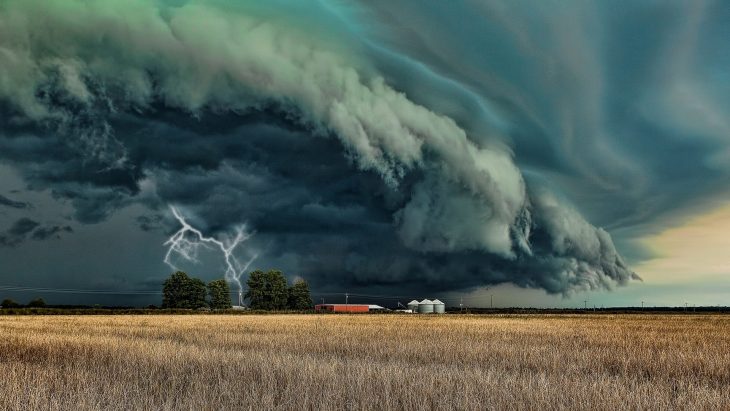As the end of July approaches, the grain markets surprised most everyone when prices headed lower after a significant decline in crop ratings from the previous week. While crop ratings indicate a trend of crop progress, they don’t necessarily accurately reflect whether crop yield potential is increasing from week to week. Our point is this: Over the past week, corn ratings dropped 2% in the good to excellent category, which now stands at 62%. The poor to very poor category is now at 12%, 1% higher than last week. After these figures were released on Monday at 3:00 Central Time, corn prices opened 4¢ to 6¢ higher on the overnight trade, and it was not long before the market focused its attention on potential rain events. Consequently, prices dropped and finished on Tuesday with futures contracts losing more than 8¢. The soybean market had even more volatility priced into it, as futures rallied well over 20¢, only to turn lower and finish with a double-digit loss by day’s end. Both posted very negative reversals on charts.
This year has been particularly challenging for farmers, as many have struggled with adverse weather since early spring. The price turnaround on Tuesday didn’t sit well with them. We understand their frustration, yet at the same time, we also understand the significance of what a timely rain event can mean to producers and to their overall crop yielding potential. It’s not surprising to hear farmers, who are stuck in a dry weather pattern, suggest their yield may be 150 bushels an acre when typically they’re used to 200. These dry weather-stressed acres are likely reflected in lower ratings. Yet, one good rain could raise yield from 150 back toward 200. In some regards, the market likely understands this. As precipitation chances increased and rain began to show on the radar (as it did this past week), it wasn’t necessarily a surprise that traders would give up on long positions.
The past few weeks are a reminder that, when weather becomes more critical, volatility in the marketplace picks up. Having target points designated above the market to sell a portion of your crop/inventory can pay big dividends. The last few years of corn prices have been on the verge of taking off due to weather, and then they collapse within days as forecasts and actual weather change. It’s hard to make decisions when watching the market. With target points in place, these sales can help reduce stress, especially if prices quickly drop.
Futures trading is not for everyone. The risk of loss in trading is substantial. Therefore, carefully consider whether such trading is suitable for you in light of your financial condition. Past performance is not necessarily indicative of future results.
Source: Successful farming.



